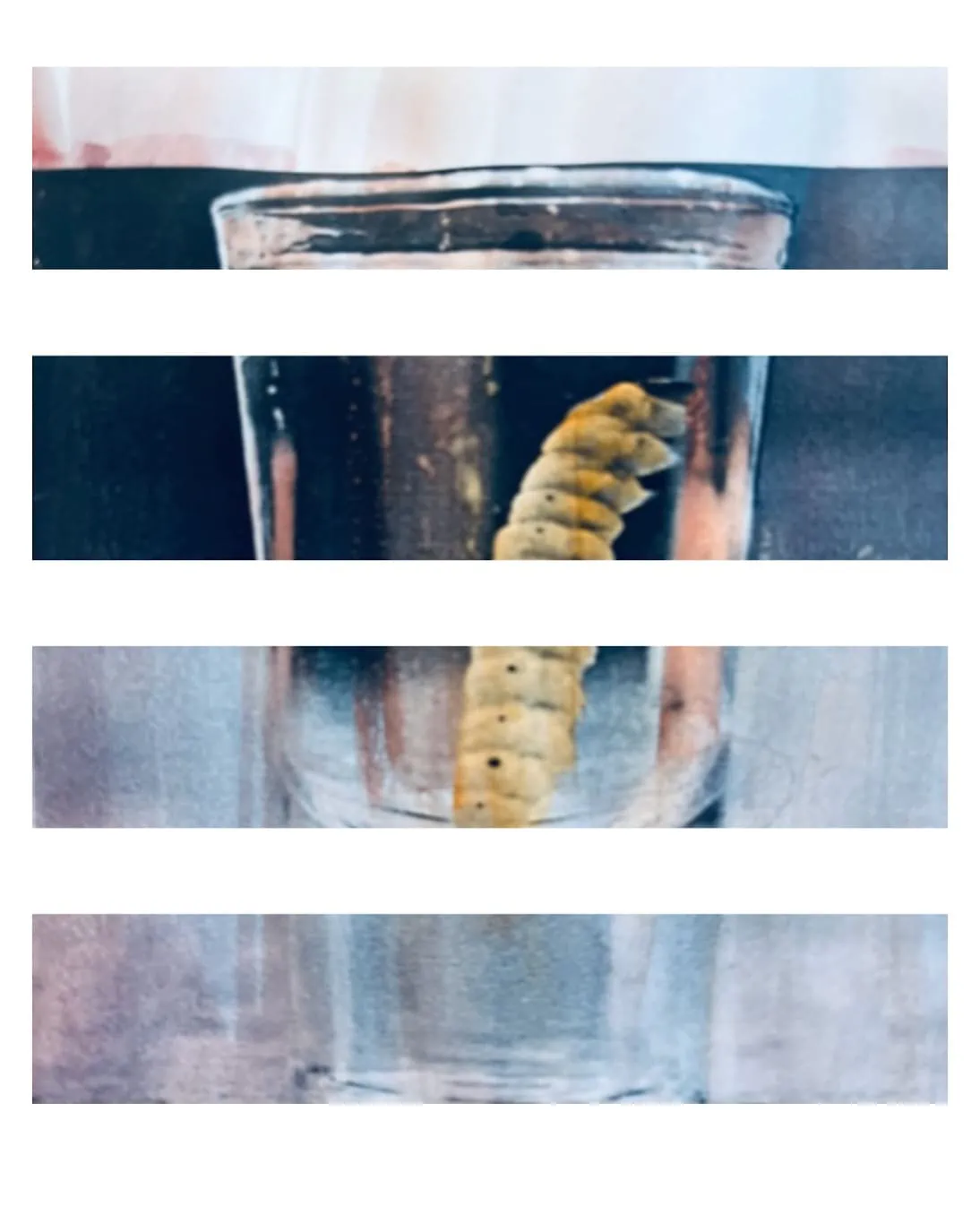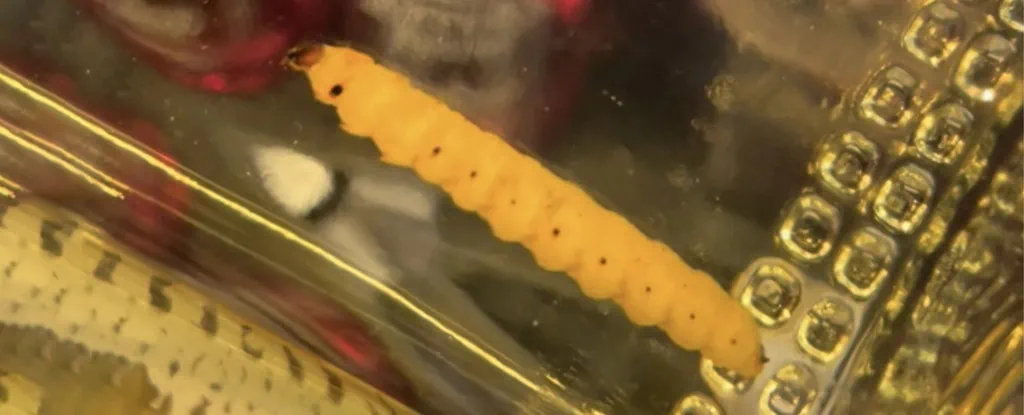
The mysterious mezcal worm is identified
Inside some bottles floats the mysterious mezcal worm…
The alcohol distilled from the heart of the succulent agave is often packaged with what many would consider a disgusting curiosity.
The mysterious ‘tequila worm,’ which is neither used in tequila, nor is it a worm (Akito Y. Kawahara/CC BY 4.0).
Since it was added to the traditional Mexican drink around the 1940s, the taxonomic identity of this alcohol-soaked worm that we dare not consume has never been confirmed.
Now, a team of researchers has conducted a DNA study on larvae preserved in different brands of commercial mezcal and unexpectedly discovered that it is indeed a single species that dresses this drink.
Until now, guesses as to the identity of the “worm” ranged from butterfly, moth and/or weevil offspring, all known pests of agave plants. Historically, Mexicans eat larvae of some 63 different species of insects, some of which are attributed with aphrodisiac and health-promoting properties.
One of the leading candidates for the identity of the mezcal specimens was the Tequila giant skipper caterpillar (Aegiale hesperiaris), a butterfly that lays its eggs on the central leaves of the agave plant. When the caterpillars hatch, they feast on the plant’s flesh. Given the insect’s common name, it seemed an obvious candidate.
Weevils are also particularly troublesome insects inside the agave, as they can cause losses of up to 40% of the crop. Females inject their eggs into the trunk or exposed roots of the plant, producing offspring that eat the plant to death from the inside. If you get one of these worms in your bottle, you’ll show who’s boss.
University of Florida entomologist Akito Kawahara and colleagues collected 21 insect specimens preserved from commercial mezcal bottles between 2018 and 2022. While some of the animals were white, others were pinkish red. Despite the subtle differences, all 18 successfully sequenced contained DNA from a single type of insect: Comadia redtenbacheri.
Mezcal worm or Moth?
Like the butterfly and the weevil, this moth – found in Texas and Mexico – also lays its eggs (around 120!) on agave plants so that the caterpillar hatchlings can feed on the stems and roots of the succulent. Because they are so numerous, they can wipe out the plant. Harvesting the young of these nocturnal caterpillars also kills the agave.
The relatively recent addition of the moth larvae to non-tequila mezcal drinks was probably a marketing gimmick, although there are many myths surrounding this practice.
“Although we believe our sampling is a solid representation of the breadth of mezcals containing larvae, it is possible that other brands and varieties that we were unable to sample contain larvae of other insect species,” Kawahara and his team qualifies in their paper.
These moth larvae are one of the most popular edible insects in Mexico. They are also added to other beverages and foods, such as salts and other dressings, and have been sold for as much as $200 per kilo.
While a global shift towards consuming more insects would have many benefits, we must be careful not to create other problems in the process. Unfortunately, the growing demand for this moth is causing its decline. Some researchers are looking into the possibility of culturing C. redtenbacheri to protect the wild population.
This research about the mezcal worm was published in PeerJ.
Don’t drink and drive. Enjoy responsibly.
Mezcal
Discover all our Mezcal-related news, facts and infos all around the world brought to you by Spirits Hunters’ experts.
See all posts in this category. Join the community on Reddit
Join the community on Reddit
Spirits Hunters is a community dedicated to spirits and the world of mixology. Feel free to talk about the world of mixology and bartending here!
Join







